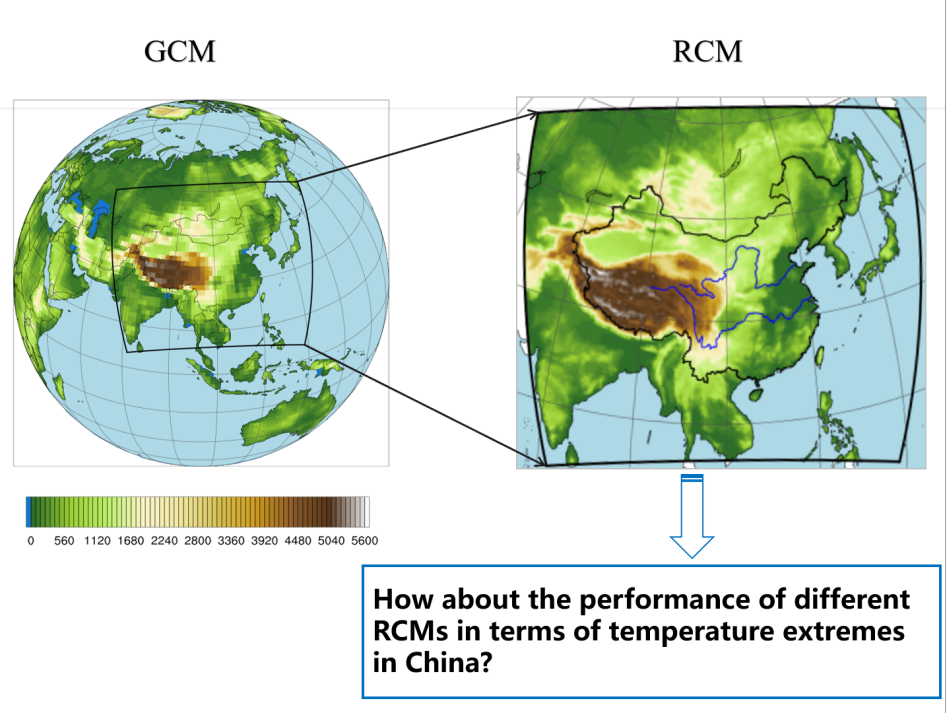Assessing Temperature Extremes in China Using Regional Climate Models
Date:2019-02-28
Regional climate models (RCMs), with their relatively high horizontal resolution, can refine the physical processes related to local climatic characteristics and extreme events, thus helping to overcome the deficiencies related to the coarse resolutions of general circulation models (typically 100 km or 200 km). However, the performances of different RCMs in terms of simulating extreme climatic events—specifically, their climate means, variability, and trends—have yet to be assessed well, quantitatively.
To gain a better understanding of RCM performance with respect to extreme climatic events, Dr. WANG Aihui, Dr. BI Xunqiang, and their team from the Institute of Atmospheric Physics, Chinese Academy of Sciences, evaluated and intercompared various extreme-temperature indices derived from the simulations of two widely used RCMs. They have had their findings published in Advances of Atmospheric Sciences.

The study focused on climate means, interannual variabilities and trends of extreme-temperature indices using RegCM 4.5 and WRF-ARW 3.6. (Image by KONG Xianghui).
They ran both RegCM 4.5 and WRF-ARW 3.6, driven by ERA-20C data, with a 50-km horizontal resolution, for the period 1900–2010, over continental China. Based on the advice of the Expert Team on Climate Change Detection and Indices, 12 extreme temperature indices (TXx, TXn, TNx, TNn, TX90p, TN90p, TX10p, TN10p WSDI, ID, FD, and CSDI) were derived from the simulations of the two RCMs and compared with those from daily station-based observational data for the period 1981–2010.
The results showed that the two RCMs have satisfactory capability in representing the spatial and temporal distribution of those extreme indices over most regions in China. RegCM generally performed better than WRF in reproducing the mean temperature extremes over China, especially over the Tibetan Plateau. Both models captured well the decreasing trends in ID, FD, CSDI, TX10p, and TN10p, and the increasing trends in TXx, TXn, TNx, TNn, WSDI, TX90p, and TN90p over China. Compared with observation, RegCM tended to underestimate the trends of temperature extremes, while WRF overestimated them, over the Tibetan Plateau.
"In general, WRF performs better than RegCM in reproducing the interannual variability of extreme temperature indices,” concludes Dr. Wang. “Our findings are helpful towards improving our understanding of the physical realism of RCMs in terms of different time scales, thus enabling us in future work to address the sources of model biases.”
Reference
Kong, X. H., A. H. Wang, X. Q. Bi, and D. Wang, 2019: Assessment of temperature extremes in China using RegCM4 and WRF. Adv. Atmos. Sci., 36(4), https://doi.org/10.1007/s00376-018-8144-0
Media contact: Ms. LIN Zheng, jennylin@mail.iap.ac.cn
